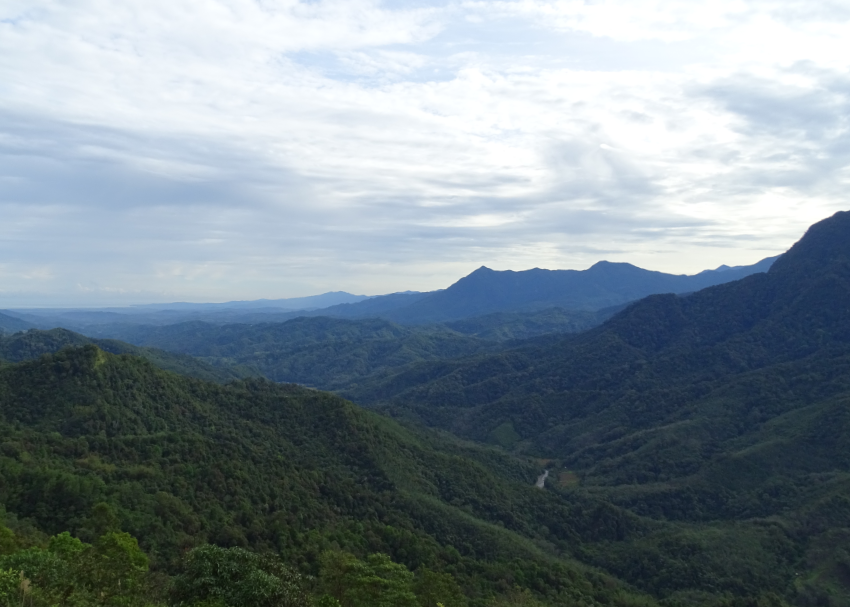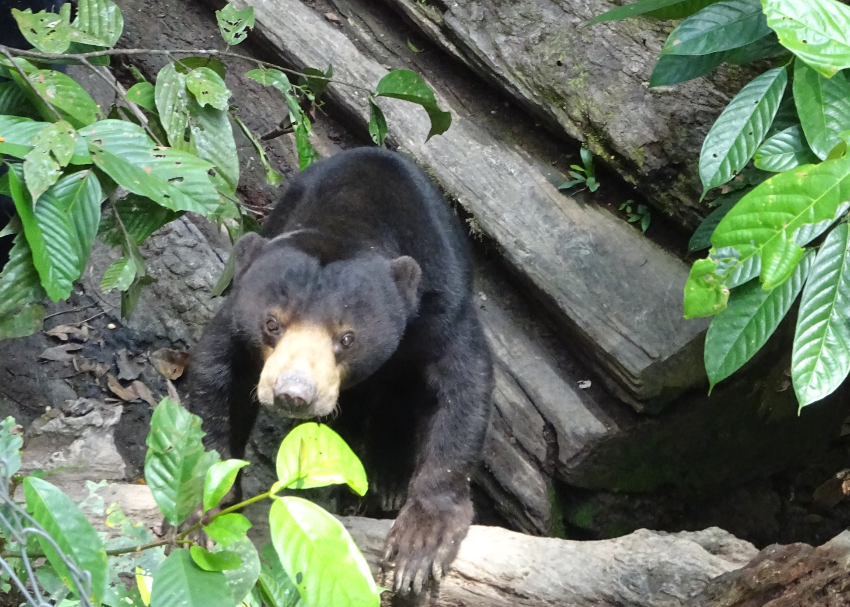Let’s be real — seeing orangutans in the wild is reason enough to hop on a plane to Borneo. But wouldn’t you know it, there’s a whole lot more to see and do on the third largest island in the world. Read on as travel writer and seven-time G Adventures traveller Richard Kitzinger, shares highlights from our Borneo - East Sabah Adventure. Having ventured to 70 countries, the journey marked his return to travel writing since the pandemic and we’re thrilled to share his experience with you.
A pure white egret, shimmering like a bride in her wedding gown, takes off from a branch and flies across the Kinabatangan River to settle on another branch. Ten of us in a speedboat follow its gaze and, heart-stopping moment, there’s a family of proboscis monkeys in a tree.

They really are the most comical looking animals. The males have long fleshy noses (hence the name proboscis monkeys) while females have quite abrupt, stumpy noses. Either way, they look permanently surprised. Our two boats remain with these amusing monkeys for a good time before we make our way back to the lodge for dinner.

This is my first experience of the Bornean jungle and, over the course of the couple of hours we are on the water, we enjoy the antics of long-tailed macaques, pig-tailed macaques, and silvered leaf langurs as well as seeing four different species of hornbill. Our Chief Experience Officer (CEO) Albert declares, “We are lucky. Very lucky.”

At our welcome meeting in Kota Kinabalu, Albert asked everyone what they were most hoping for from the tour and the vast majority wanted to see wildlife, the favourites being orangutans of course, but also pygmy elephants, proboscis monkeys, and turtles. There are, says Albert, “No guarantees,” but the jungle gods are favouring us.

When the goal is spotting wildlife, I work by the principle that my research is important and a good guide is vital but these things only enhance the chances of success. Ultimately it is a matter of weather conditions and luck aligning. Outside of that, the East Sabah Adventure covered all the bases in terms of destinations and opportunities to see the full range of Sabah’s special flora and fauna.

We have three included river cruises. Returning to the lodge for breakfast from one of these, travellers in another boat recount excitedly how they just saw an orangutan in a tree. No questions asked, Albert and our local pilot/guide have us put our life jackets on and we head back out on the water. It turns out to be not just one orangutan, but a mother and baby, perhaps a year old. While mum lazily plucks figs from the bounteous crop growing in the tree, the little one entertains us with stretches, swinging practice, and the most comically earnest facial expressions on its old-young face.

From land we see the same orangutan and her baby, making our approach on a jungle hike through the rainforest. There we encounter creepy crawlies like pill bugs and giant millipedes, the sorts of creatures I thought existed only in Roald Dahl stories. A few of the local leeches attached themselves to members of the group, causing moments of pain and some bleeding. On balance it was probably worth it though, given how much the story is retold that evening.
Orangutans are synonymous with Borneo – and rightly so – but there is so much more besides. I am captivated by a rhinoceros hornbill that I watch fly the width of the Kinabatangan River to perch in a tree. It’s easy to see why the large red curving horn above its yellow bill draws comparisons with the horn of a rhino. Then there is the estuarine crocodile that slips into the river and keeps pace with us for a while though our pilot mercifully maintains a respectful distance.

A real highlight for many of us is a jungle hike where we see dung and footprints in the mud belonging to the world’s smallest species of elephant, the Borneo pygmy elephant. Encountering a herd, I enjoy their trumpeting and constant nuzzling into one another. Something is clearly agitating them. Within three minutes, the heavens open and we are soaked by a deluge. It leaves me marvelling at their intelligence and how they sensed the coming thunderstorm well before it catches us out.

Part of the appeal of the tour is that we also visit the renowned Orangutan Rehabilitation Centre at Sepilok and the neighbouring Sun Bear Conservancy. Here, in 46 hectares of forest, the primates live a semi-wild existence with twice daily feedings on a platform in front of a sizeable crowd of tourists. I’m grateful to see them up close but every bit as thankful that I saw some truly wild ones.

Not having seen sun bears in the jungle, it is very nice to see some of the rescued ones at Sepilok. Listed as vulnerable, the world’s smallest bear can be found in Borneo but is rarely seen in the wild.

Our wildlife encounters are not restricted to the jungle. We spend a night on Pulau Libaran, one of the islands where hawksbill and green sea turtles lay their eggs. Fortune – as well as the full moon – shines on us as we are able to witness the release of forty newborn turtles, hatched that very afternoon. For some of our group, the brief moment as the hatchlings waddle toward the greater safety of the ocean is their best wildlife memory of the trip.

That, I think, is the beauty of Borneo. We all arrive with hopes of seeing the orangutans – and spotting them in the wild is indeed something special – but, from the tiniest crimson sunbird to the pygmy elephants and from the turtle hatchlings to the sun bears of Sepilok, we all take away photos and memories of a great many more peculiar creatures.
Getting there
Ready to swing through the Bornean jungle to spend time with its wide range of wildlife? Here are a few ways to join us on a small group tour:
Borneo – East Sabah Adventure
Best of Borneo
Highlights of Sabah & Mt Kinabulu























